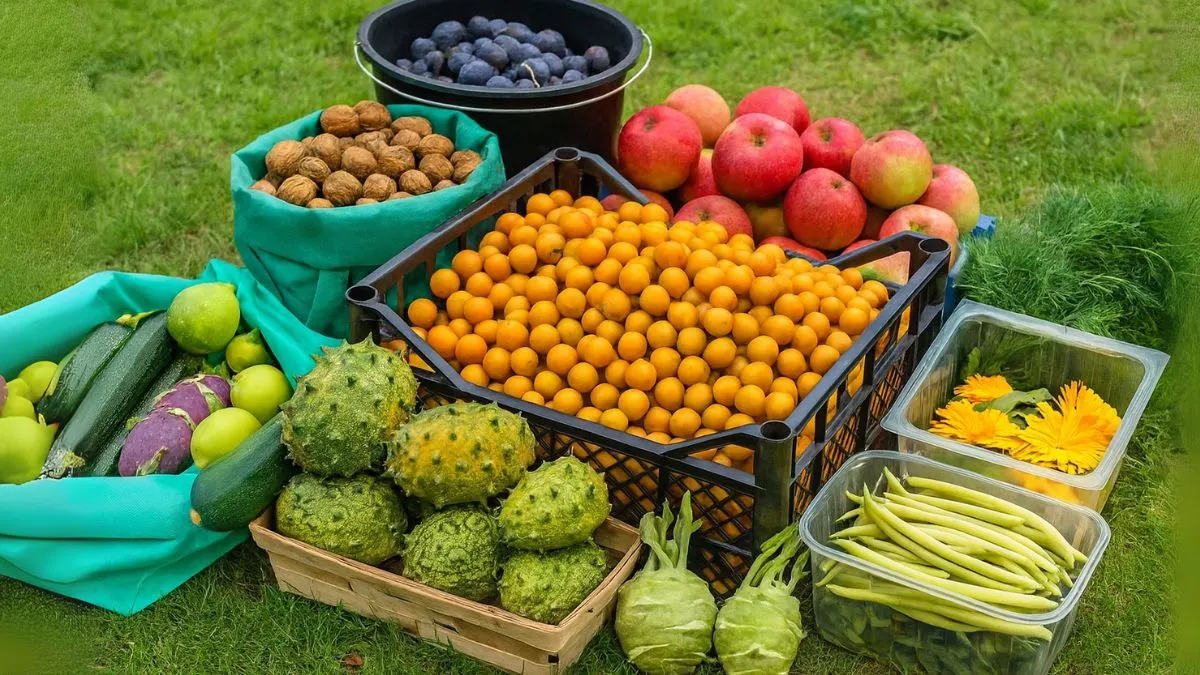There’s something magical about stepping into your own garden and harvesting fresh food you grew with your own hands. But here’s the common question every beginner gardener asks: Are fruits or vegetables easier to grow yourself? The answer isn’t as simple as one or the other—it depends on the type of plant, the climate, and the effort you’re willing to put in. Let’s break it down with real examples, so you can decide what works best for your garden.
Why Vegetables Are Easier for Beginners

When comparing fruits and vegetables, vegetables are generally easier to grow yourself. Unlike fruit trees, which may take years before producing, many vegetables sprout and mature quickly.
- Fast growth: Vegetables will grow the quickest, often within a few weeks to months.
- Less space: You can grow many vegetables in containers or small raised beds.
- Low maintenance: With basic watering and sunlight, many veggies thrive without much fuss.
From personal experience, my first garden had more success with leafy greens than with fruit plants. The quick results kept me motivated to expand further.
Easiest Vegetables to Start With
Some vegetables are practically foolproof.
- Leafy Greens: Lettuce, bok choy and cabbage are relatively easy to grow, especially in cooler climates. They don’t demand much—just consistent watering and partial sunlight.
- Root Vegetables: If you’re looking for quick wins, carrots, radish and beets are pretty quick and easy root veggies. They don’t need transplanting; just sow seeds directly in well-drained soil. Within a few weeks, you’ll see green tops popping out.
- Peppers: Bell peppers are a great option. They do well in pots and raised beds as long as they get 6–8 hours of sunlight. Plus, they’re colorful and versatile in the kitchen.
Also Read: How to Grow Watermelons for Juicy, Sweet Harvests
Here’s a simple comparison table for beginners:
Vegetable |
Time to Harvest |
Care Level |
Best Growing Condition |
Lettuce |
30–45 days |
Easy |
Partial shade, moist soil |
Carrots |
60–80 days |
Easy |
Loose, sandy soil |
Radish |
20–30 days |
Very Easy |
Cool weather |
Bell Peppers |
60–90 days |
Moderate |
Warm, sunny spots |
What About Fruits?
Fruits require a little more patience. Unlike most vegetables, fruit plants often take longer to establish. Still, some fruits are easier than others.
- Strawberries: When it comes to fruit, strawberries and dwarf fruit trees are the best fruits to grow in a garden. Strawberries thrive in containers, hanging baskets, or garden beds. They reward you with sweet berries in just one season.
- Dwarf Fruit Trees: If you have limited space, go for dwarf apple, peach, or citrus trees. They’re manageable in size and produce fruit earlier than full-sized trees.
- Melons and More: If you have more room, try sunflowers, sweet potatoes, watermelons and walnuts. While watermelons love warmth and space, sweet potatoes can be grown even in large containers.
Fruits vs. Vegetables: The Challenges
While fruits can be rewarding, they come with challenges:
- Time: Fruit trees may take years to mature. Vegetables, on the other hand, are ready in weeks or months.
- Space: Many fruits require more room, while vegetables can thrive in compact gardens.
- Pests: Fruits are often more attractive to birds, insects, and critters.
From my own gardening attempts, I found that while my lettuce and radishes grew easily, my first attempt at a lemon tree tested my patience—it took years before it produced any fruit.
Also Read: How to Grow Strawberries for Juicy Harvests
Combining Fruits and Vegetables in One Garden
Why choose one when you can have both? Many gardeners grow vegetables for quick harvests and fruits for long-term rewards. For example:
- Plant radishes and lettuce for a fast yield.
- Add strawberries in containers to enjoy fruit within the same season.
- Experiment with bell peppers and a dwarf fruit tree to balance short- and long-term harvests.
This mix ensures you get both immediate satisfaction and future abundance.
Vegetables are generally easier to grow yourself, especially if you’re just starting. Vegetables will grow the quickest, and beginner-friendly picks like carrots, radish and beets, lettuce, bok choy and cabbage, and bell peppers offer quick, delicious rewards.
That said, don’t overlook fruits. Strawberries and dwarf fruit trees are the best fruits to grow in a garden, and with patience, larger crops like sunflowers, sweet potatoes, watermelons and walnuts can also thrive.
👉 My advice? Start small with vegetables for fast results, and slowly add fruit plants for long-term enjoyment. That way, your garden will provide both instant gratification and future harvests.






